Kingbull Voyager vs. Rad Power RadRunner 3 Plus: Cargo E-Bike Showdown
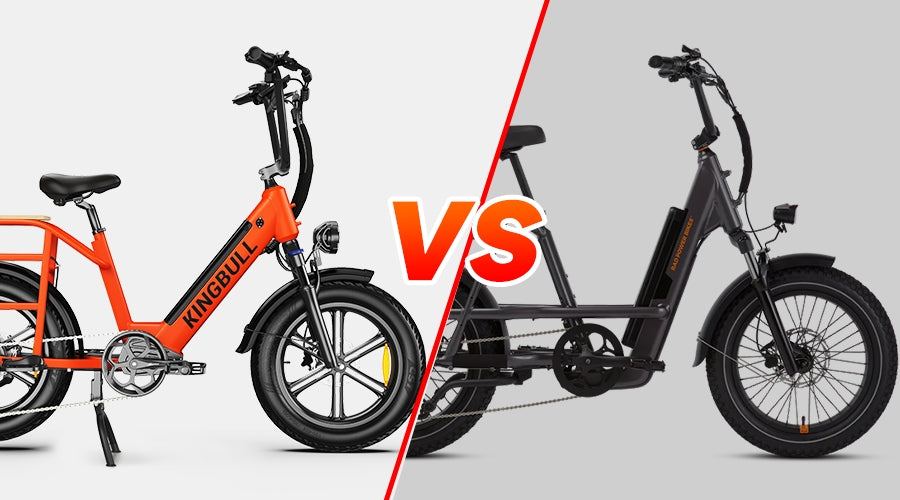
In the ongoing revolution of urban transportation, cargo electric bikes have become integral in providing users with efficient and environmentally conscious solutions. This mode of transportation not only tackles urban congestion but also underscores the importance of sustainable development. In this article, we will delve into a comparative analysis between the Kingbull Voyager and Rad Power RadRunner 3 Plus, shedding light on these two cargo electric bikes by scrutinizing their design and performance aspects. The objective of this comparison is to empower readers with a comprehensive understanding, aiding them in making well-informed decisions to meet their daily commuting requirements.
Performance Overview
| Voyager | RadRunner 3 Plus | |
| Motor | 750W | 750W |
| Battery | 48V 17.5AH | 48V 14AH |
| Speed | 28 MPH | 25mph |
| Range | Up to 60 miles | Up to 45 miles |
| Pedal Assist | 5 Levels | 5 Levels |
| Brakes | Hydraulic | Hydraulic |
| Throttle | Thumb Throttle | Half twist throttle |
| Sensor | Speed | Torque |
| Gears | Shimano 7-Speed | Shimano 7-Speed |
| Weight | 77 lbs | 77 lbs |
| Payload Capacity | 440 lbs | 350 lbs |
| Frame | 6061 Aluminum Alloy with Internal Battery | 6061 Aluminum Alloy with semi-integrated battery |
| Wheels | 20″ x 4″ CST fat tires | 20″ x 3.3″ Kenda K905 tires |
| Light | 48V LED Front Headlight,taillight with brake light | LED headlight, taillight with brake light |
| Price | $1,199 | $2,099 |
By comparing the data in the table, we will conduct a thorough analysis and comparison of the two cargo electric bikes, the Kingbull Voyager and the Rad Power RadRunner 3 Plus. Through these comparisons, we will delve into their key features to assist prospective buyers in making informed decisions, ensuring that consumers choose the electric bike that best suits their needs.
Motor & Battery
Both electric bikes are equipped with powerful 750-watt motors, complying with the regulations of the U.S. electric bike laws to ensure the maximum power is safely achieved. In terms of battery capacity, the Kingbull Voyager stands out. The Voyager has a battery capacity of 48V 17.5Ah. In comparison, the official data for the Rad Power RadRunner 3 Plus indicates a battery capacity ranging from 589-672 Wh, approximately equivalent to 14Ah when converted. While this is still a considerable battery capacity, it may be slightly less than the Voyager's single battery capacity.
It's worth noting that the Kingbull Voyager also offers the option of a dual-battery setup, providing consumers seeking longer range with a more flexible choice. With the dual-battery configuration, the Voyager can achieve a range of up to 100 miles, offering greater convenience for users requiring an extended riding distance. This significant advantage in battery performance positions the Voyager as a suitable choice for riders who prioritize extended range capabilities.

Speed & Range
The Kingbull Voyager boasts a maximum speed of 28mph. According to the regulations of the U.S. bicycle laws, Voyager's speed meets legal standards in many regions and can even provide a higher speed within legal limits. It's essential to adjust the speed according to local bicycle regulations during rides to ensure safety and compliance.
In comparison, the Rad Power RadRunner 3 Plus has a maximum speed of 25mph. While it may not match the speed of the Voyager, considering safety factors, it remains a good choice in many areas.
Regarding the riding range, the Kingbull Voyager offers a maximum range of 60 miles, whereas the Rad Power RadRunner 3 Plus provides 45 miles. Due to the larger battery capacity of the Voyager, there is no doubt that the Voyager excels in the riding range, offering users a longer distance for their rides. This makes the Voyager a superior choice for those seeking longer journeys.
Brakes & Throttle
Voyager and Rad Power RadRunner 3 Plus both feature Hydraulic brakes, highlighting a shared commitment to advanced braking technology. Hydraulic brakes bring several advantages to the table. Firstly, they offer enhanced braking performance with precise control and modulation. The hydraulic system transmits force more efficiently, translating to quicker and more reliable stopping power.
Moreover, hydraulic brakes are known for their consistent performance in various weather conditions. Unlike mechanical brakes that may be affected by cable stretch or environmental factors, hydraulic systems provide reliable braking even in adverse situations, ensuring rider safety.
Additionally, hydraulic brakes typically require less manual effort to operate, contributing to a more comfortable riding experience. The system's responsiveness and reduced hand fatigue make it particularly advantageous during extended rides or in challenging terrains. Click here to learn more about the differences between mechanical brakes and hydraulic brakes.
The focus of comparison now shifts to the throttle systems, with Voyager opting for a thumb throttle, while Rad Power RadRunner 3 Plus employs a half twist throttle. These two designs largely depend on personal preference, and the following will outline the respective advantages of each throttle type.
The advantage of the thumb throttle lies in its convenience of operation. Positioned at the top of the handlebar, riders can easily control the throttle with their thumb without adjusting their grip on the handlebar. This design is particularly popular for long rides as it reduces hand fatigue, enhancing overall riding comfort.
In contrast, the half twist throttle design emphasizes finer control. Typically situated on the side of the handlebar, it controls the throttle by twisting a portion of the handlebar. This design allows riders to have more precise control over acceleration and speed adjustments, suitable for scenarios that demand more flexible control.
In summary, the thumb throttle emphasizes simplicity and comfort in operation, while the half twist throttle focuses on nuanced control, ideal for riders with higher demands for speed adjustments. The choice between these throttle types will depend on individual riding preferences and usage scenarios.
Sensor
Voyager utilizes a speed sensor, while RadRunner 3 Plus employs a torque sensor. The choice between these two designs largely depends on personal preference. The following will outline the advantages of each sensor type.
The advantage of a speed sensor lies in providing riders with a smoother and more natural riding experience. This sensor adjusts the electric bike's power output by monitoring the rider's pedal speed, achieving smoother acceleration and deceleration processes. For riders who appreciate the feel of traditional bicycle riding, the speed sensor offers a more intuitive power control.
In contrast, a torque sensor places more emphasis on the rider's force and exertion. By sensing the rider's pedal force, the torque sensor can more accurately adjust the electric bike's assistance level, achieving a power output that better aligns with the rider's needs. This design is suitable for riders seeking more precise and personalized assistance.
In summary, a speed sensor provides a smooth and intuitive riding experience, while a torque sensor focuses on more precise and personalized force control. The choice between these sensor types will depend on individual riding habits and preferences.
Weight & Payload Capacity
Voyager and RadRunner 3 Plus share the same weight, both weighing in at 77lbs. However, in terms of payload capacity, Voyager has a significant advantage. With a payload capacity of 440lbs, Voyager exceeds Rad Power RadRunner 3 Plus, which supports up to 350lbs. Note: The rear seat of Voyager has a maximum weight capacity of 300lbs.
This difference in payload capacity can be attributed to the construction and design of the frames. Voyager's frame construction is optimized to handle a higher load, ensuring greater durability and stability. Therefore, for riders seeking an electric bike with a higher payload capacity, Voyager presents a more favorable option, providing added versatility and suitability for various cargo and rider configurations.
Frame
Voyager's frame is constructed with 6061 aluminum alloy and features an internal battery design, while RadRunner 3 Plus's frame also utilizes 6061 aluminum alloy with a semi-integrated battery. Although both use the same 6061 aluminum alloy material, the key difference lies in the battery layout.
The primary advantage of the internal battery design is its impact on aesthetics and overall integration. The battery is cleverly embedded within the frame, providing a sleeker appearance without compromising the traditional aesthetics of bicycles. Additionally, the internal battery design offers superior protection for the battery. Being located inside the frame, it is less susceptible to external environmental factors, such as rainwater and dust, compared to external batteries. This helps prolong the battery's lifespan and enhances the overall reliability of the bike in various weather and road conditions.
Voyager's frame adopts an unibody frame design with an elevated rear seat. The advantage of an unibody frame design lies in enhancing the overall stability of the bike. This structure creates a more robust and cohesive riding platform, helping to reduce vibrations and torsion, thereby improving the bike's stability. This is particularly beneficial for riding on various terrains, especially bumpy or uneven surfaces, as it better maintains the stability of the vehicle, providing a more reliable riding experience.
The elevated rear seat design brings additional advantages, primarily in two aspects. Firstly, this design reduces the likelihood of the electric bike tipping over. By raising the rear seat, the inclination angle of the vehicle is minimized, lowering the risk of tipping, especially at low speeds or during stationary moments. Secondly, the elevated rear seat contributes to better maintaining riding balance. This is crucial for maneuvering and overall control, making it easier for riders to handle the vehicle and enhancing the overall safety and comfort of the ride.

Price
Voyager is priced at $1199, while RadRunner 3 Plus is priced at $2099. Undoubtedly, in terms of cost-effectiveness, Voyager holds a clear advantage. Voyager not only leads in terms of pricing but also demonstrates excellent performance. Whether it's motor performance or range, Voyager delivers a satisfying level of capability.
Voyager's design is more user-centric, taking into consideration the needs and comfort of riders. This design focuses on details, enhancing the overall riding experience. In summary, Voyager not only competes strongly in terms of price but also provides riders with a more comprehensive choice in terms of performance and design.
Conclusion
Both Voyager and RadRunner 3 Plus exhibit distinct advantages, making them excellent choices. However, in terms of performance and cost-effectiveness, Voyager stands out. With a more budget-friendly price, Kingbull Voyager offers riders a comprehensive selection, catering to those seeking high performance as well as those prioritizing affordability. Therefore, if you are looking for an electric bike with outstanding performance and reasonable pricing, Voyager is undoubtedly a preferred choice worth considering.







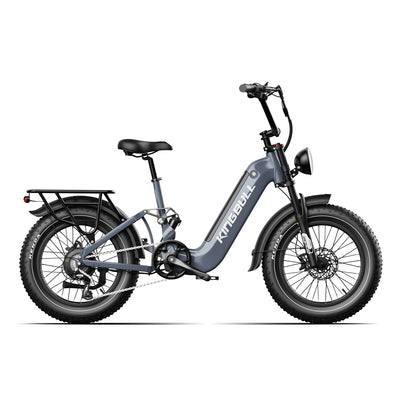
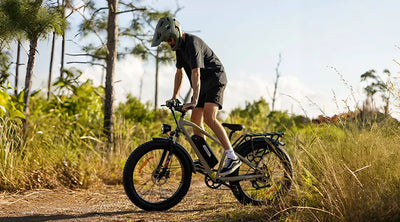

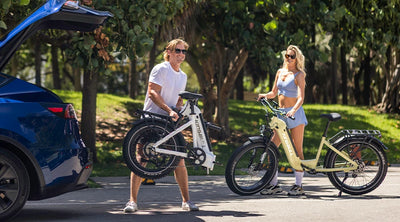
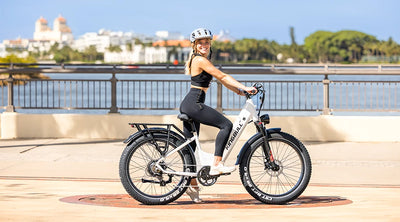
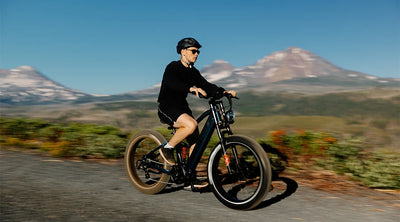



















Leave a comment